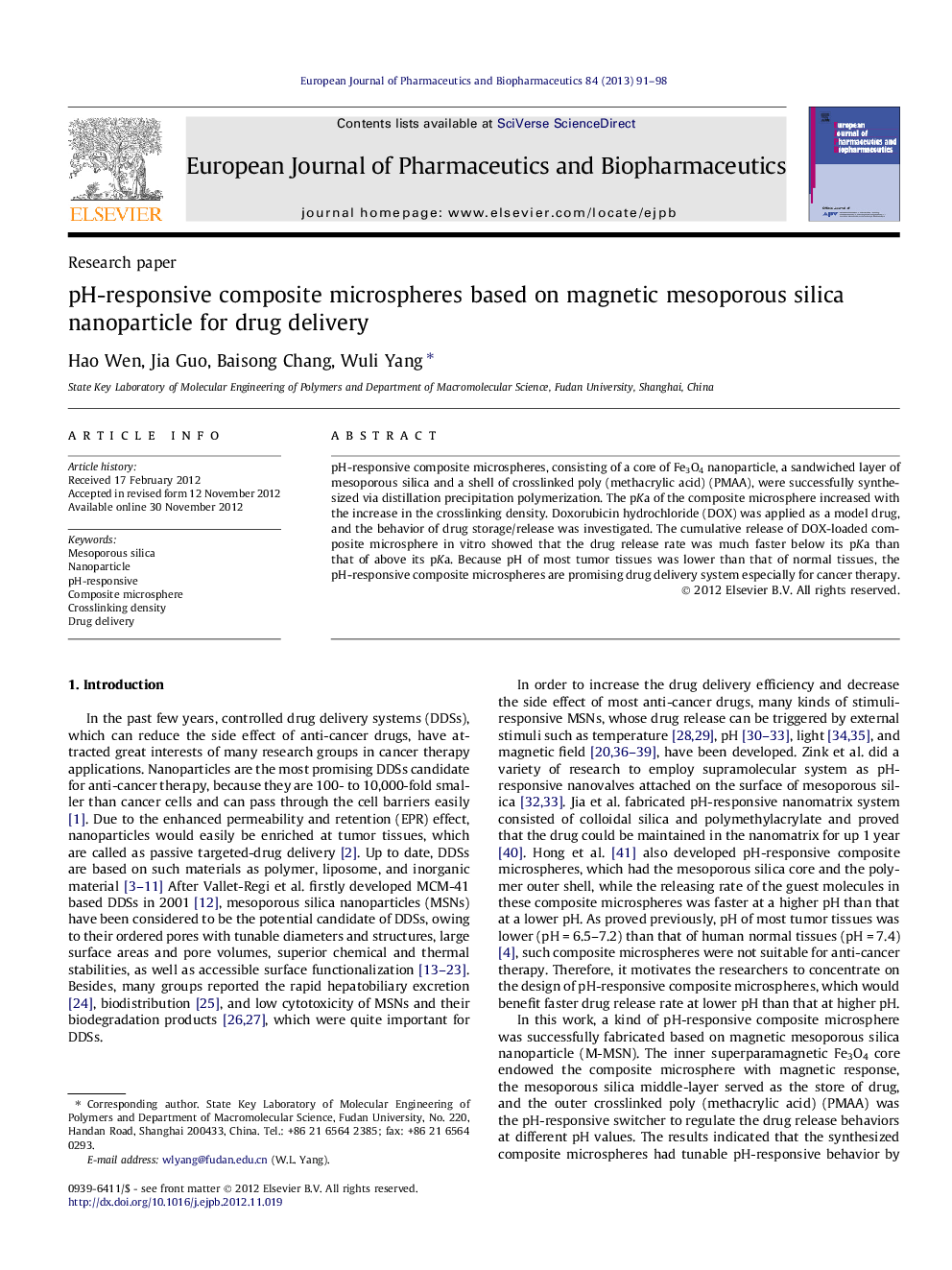| Article ID | Journal | Published Year | Pages | File Type |
|---|---|---|---|---|
| 2083915 | European Journal of Pharmaceutics and Biopharmaceutics | 2013 | 8 Pages |
pH-responsive composite microspheres, consisting of a core of Fe3O4 nanoparticle, a sandwiched layer of mesoporous silica and a shell of crosslinked poly (methacrylic acid) (PMAA), were successfully synthesized via distillation precipitation polymerization. The pKa of the composite microsphere increased with the increase in the crosslinking density. Doxorubicin hydrochloride (DOX) was applied as a model drug, and the behavior of drug storage/release was investigated. The cumulative release of DOX-loaded composite microsphere in vitro showed that the drug release rate was much faster below its pKa than that of above its pKa. Because pH of most tumor tissues was lower than that of normal tissues, the pH-responsive composite microspheres are promising drug delivery system especially for cancer therapy.
Graphical abstractA kind of pH-responsive composite microsphere based on magnetic mesoporous silica nanoparticle was synthesized by distillation precipitation polymerization and showed a relatively fast drug release behavior below its pKa since the poly (methacrylic acid) shell was protonated and collapsed.Figure optionsDownload full-size imageDownload high-quality image (89 K)Download as PowerPoint slide
